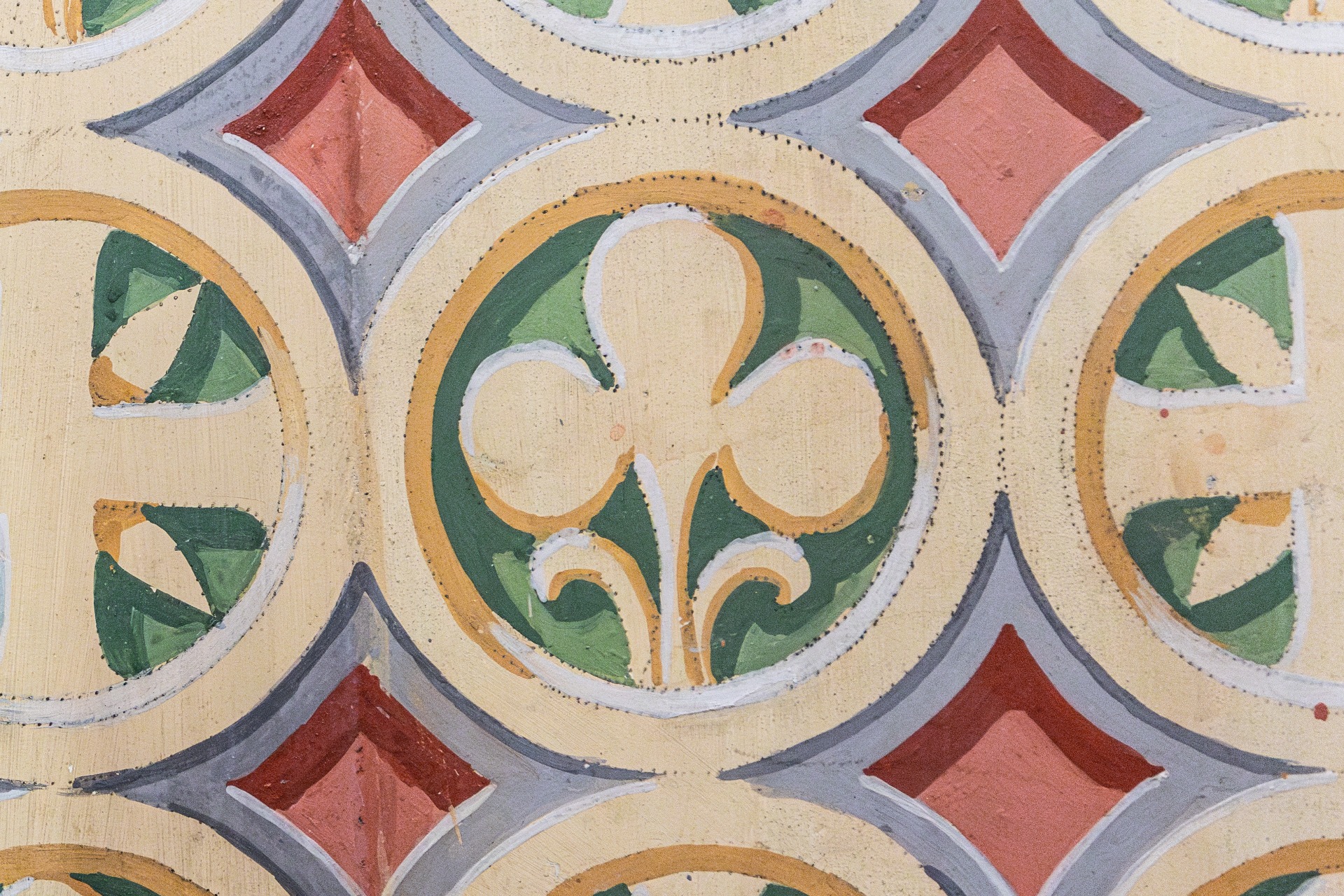
The technique
Take the time to study the wall in front of you.
This is the best place in the church to gain a better understanding of all the different stages in Guido Nincheri’s work.

First of all, you can see the little black dots of charcoal still apparent on the wall. Without fully tracing the contours of the pattern, the dots were close enough together to guide the artist’s brushstrokes.
Also note how the marks left by the bristles of the paintbrush are visible up close. Looking at the sheer number of brushstrokes, you can begin to understand the accuracy and attention to detail required to paint a wall like this!
Now take a look at how the artist has created a relief effect. Nincheri mixed two or three different shades of the same colour to create the shadows. You can see that the darker shades are applied in a way that makes it look as though the light is streaming through the top window on the left. It is these gradations of colour that create what is known as trompe l’oeil: although the artist painted on a flat surface, from a distance, you can clearly see the three-dimensional effect. Go on, try it! Walk backwards towards the chancel: you’ll see this relief effect gradually begin to materialize before your eyes.